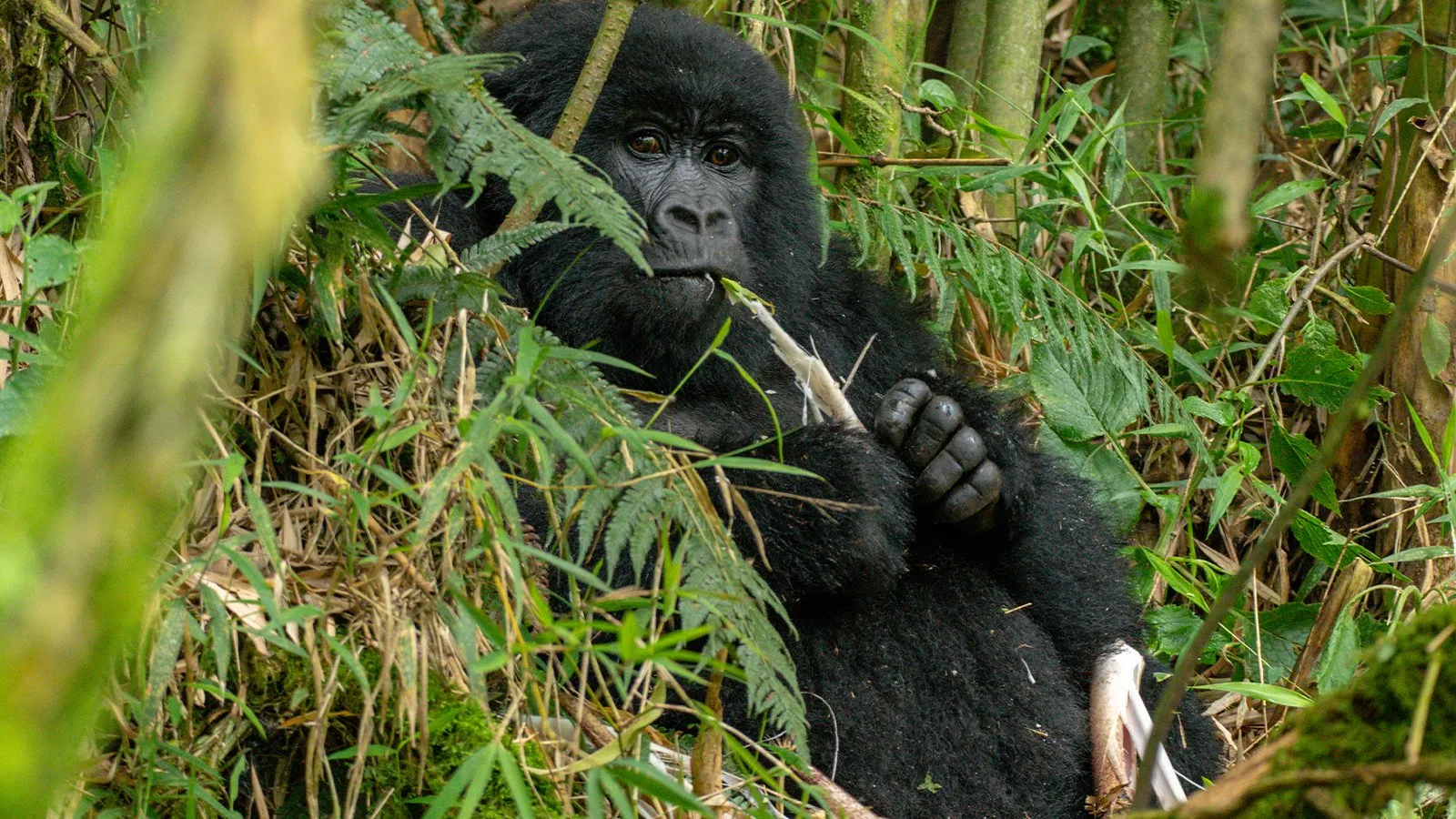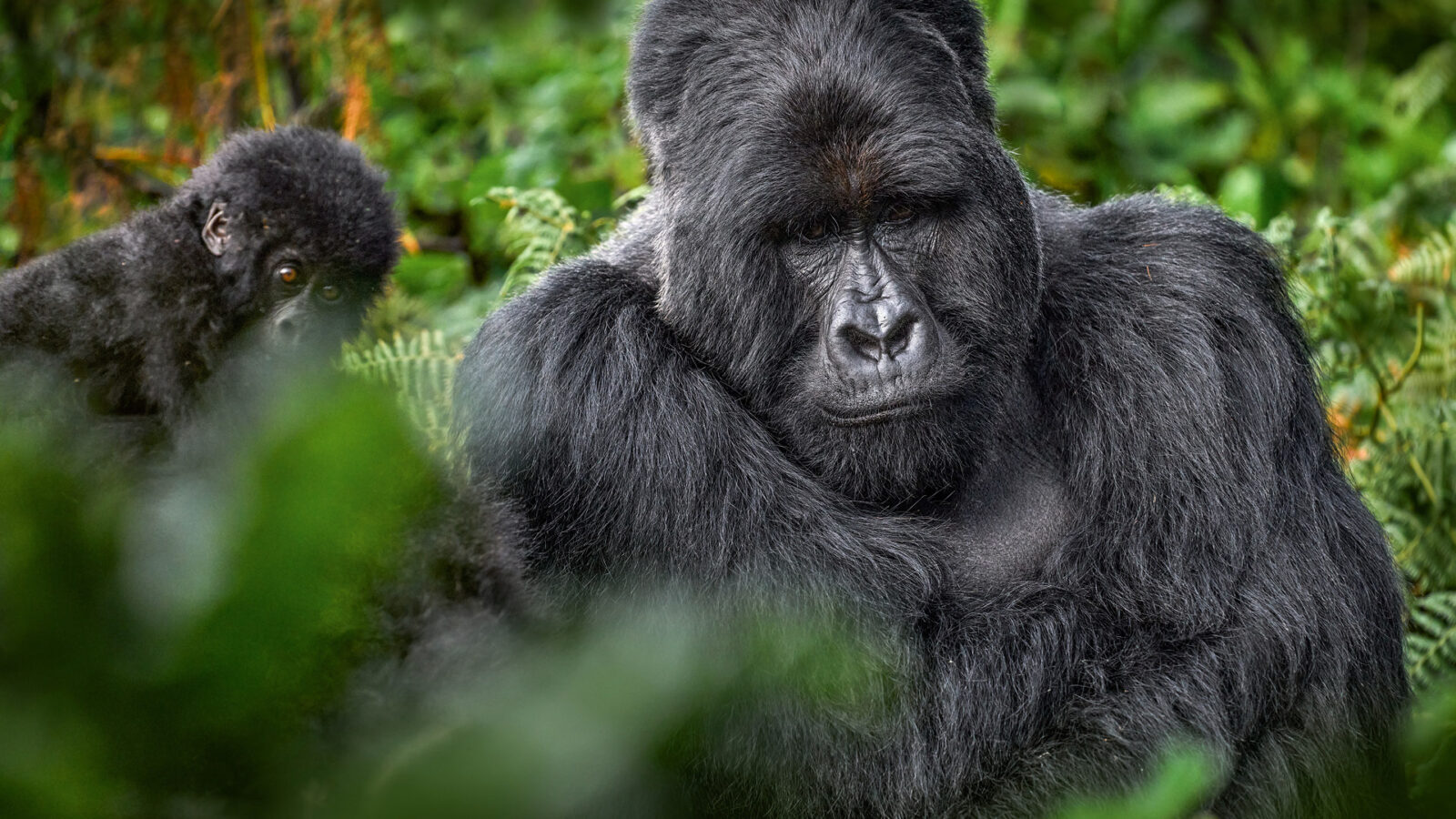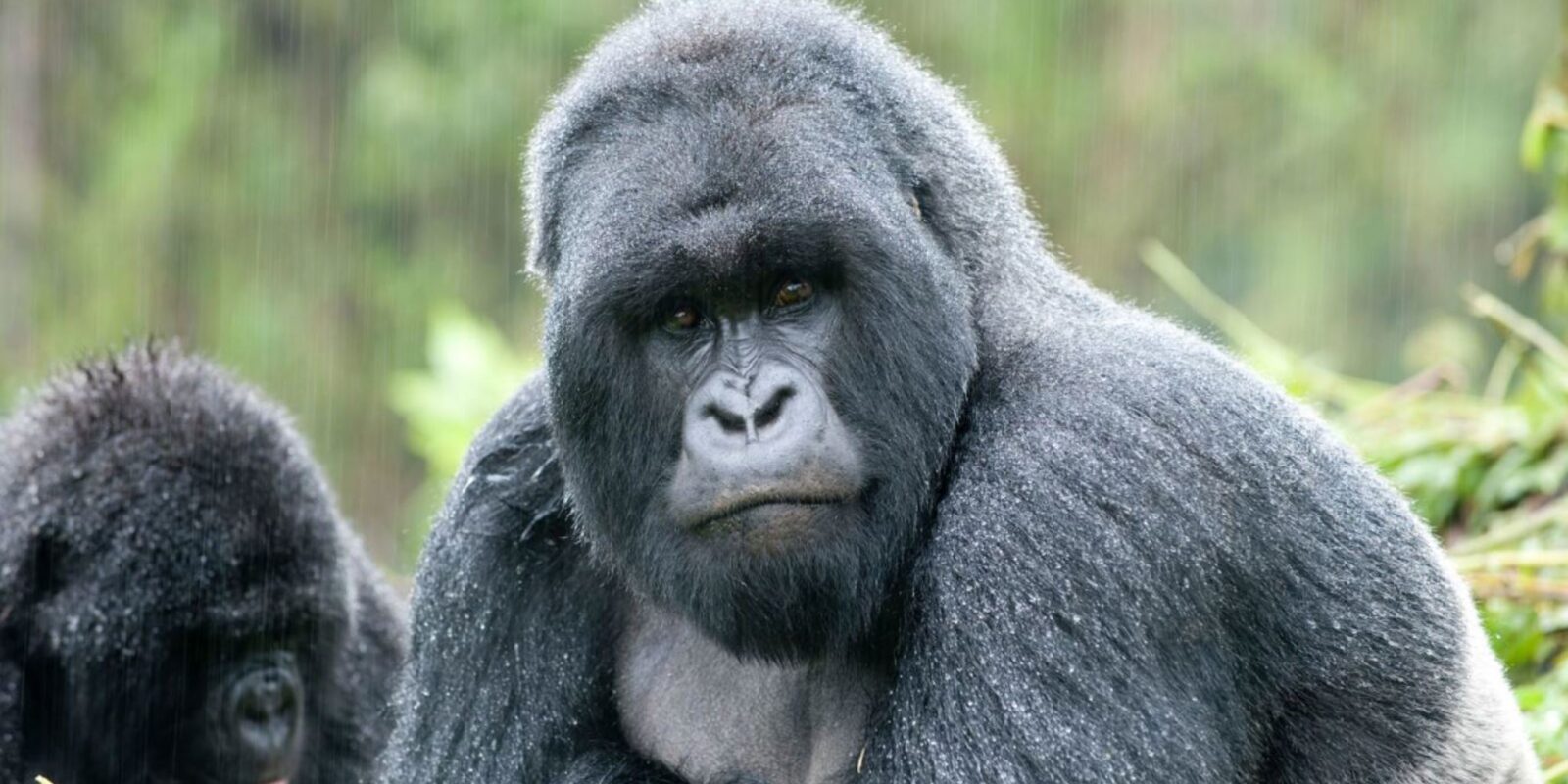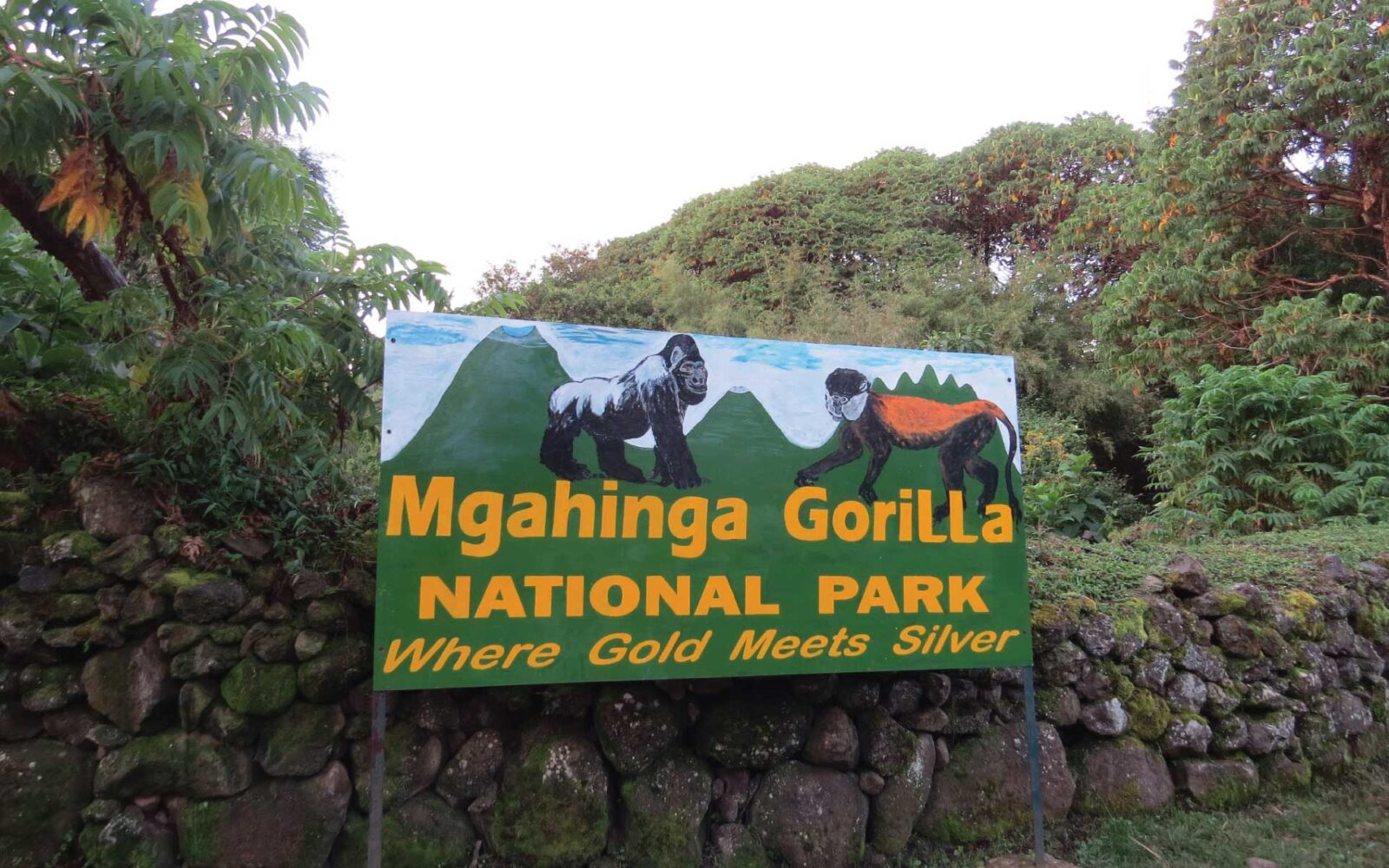
Mgahinga Gorilla National Park— Guide
Mgahinga Gorilla National Park – Where Gold Meets Silver
At Uganda’s southwestern frontier, where the borders of Rwanda and the Democratic Republic of Congo converge, lies one of Africa’s smallest yet most extraordinary protected areas — Mgahinga Gorilla National Park. Covering just 33.7 square kilometers, this compact gem forms part of the great Virunga Conservation Area, a chain of majestic volcanoes draped in mist and rainforest. Despite its size, Mgahinga captures the true essence of wild Africa — a land of breathtaking scenery, cultural depth, and unforgettable encounters with mountain gorillas and golden monkeys.
A Landscape Born of Fire and Mist
Mgahinga’s landscape is a spectacle of natural drama. The park sits within the Virunga Mountains, a chain of eight volcanoes that stretch across Uganda, Rwanda, and Congo. Three of these — Mount Muhabura (4,127m), Mount Gahinga (3,474m), and Mount Sabyinyo (3,669m) — dominate the park’s skyline, their slopes cloaked in bamboo and afro-montane forest.
Hiking through these volcanic foothills feels like stepping into a world suspended between earth and sky. The cool mist swirls through towering trees, birds call from the canopy, and sunlight breaks through clouds to reveal sweeping views of the Great Lakes and neighboring peaks. This rich ecosystem shelters a remarkable variety of flora and fauna, but none more famous than the gentle mountain gorilla.
The Nyakagezi Gorilla Family – Mgahinga’s Silverback Pride
Mgahinga is home to the Nyakagezi Gorilla Family, a fully habituated group of mountain gorillas known for their calm and curious nature. Unlike Bwindi, which has multiple trekking sectors, Mgahinga offers an intimate and exclusive experience — only one family, one trek at a time, and a truly peaceful atmosphere.
Treks begin at Ntebeko Visitor Centre, where small groups of visitors set out under the guidance of experienced rangers and trackers. The trek can last anywhere between 1 to 5 hours, depending on the gorillas’ movements. The terrain varies from gentle forest paths to steeper volcanic slopes, with the reward being an hour spent in the company of these extraordinary primates.
Standing just meters from a silverback as he watches over his family, or witnessing young gorillas tumbling playfully through the undergrowth, is an experience beyond words — emotional, humbling, and deeply spiritual.
Golden Monkey Tracking – The Park’s Other Treasure
Mgahinga is famously described as the place “where gold meets silver”, symbolizing the coexistence of golden monkeys and mountain gorillas within the same park. Golden monkey tracking is a lively and colorful experience — these playful primates leap through the bamboo forest in flashes of gold and russet, their movements quick and entertaining.
Golden monkey trekking offers a wonderful complement to gorilla tracking, taking around 2–3 hours and involving easier trails. The park also offers a Golden Monkey Habituation Experience, allowing visitors to spend extended time observing and photographing these rare creatures as they go about their daily lives.
Hiking and Volcano Climbing Adventures
Mgahinga is not only about primates — it is also a hiker’s paradise. Adventurous travelers can climb any of its three volcanoes for breathtaking views over the Virunga range.
Mount Sabyinyo (“Old Man’s Teeth”) features a rugged trail that takes you across Uganda, Rwanda, and Congo — three countries in one day.
Mount Gahinga offers a gentler hike, passing through lush bamboo forests to a crater swamp at the summit.
Mount Muhabura, the tallest, presents a challenging but rewarding climb, with panoramic views stretching to Lake Edward and the Rwenzori Mountains on clear days.
Each hike reveals the park’s rich vegetation zones — from bamboo belts and Hagenia woodlands to afro-alpine meadows alive with lobelias and giant groundsels.
The Batwa Trail – A Journey Through Culture and Heritage
Before the establishment of the park, the Batwa pygmies were the forest’s original inhabitants, living in harmony with nature for centuries. Today, visitors can join them on the Batwa Trail, a guided cultural experience that retraces their ancestral life within the forest.
The Batwa guides share their traditional knowledge of hunting, herbal medicine, and spiritual beliefs, ending the journey at the Garama Cave, once used as a royal residence and refuge. The experience is not only immersive but also deeply moving, offering insight into the resilience and heritage of Uganda’s indigenous forest people.
Wildlife Beyond Gorillas
Despite its compact size, Mgahinga hosts a variety of wildlife, including forest elephants, buffaloes, bushbucks, duikers, giant forest hogs, and an impressive array of bird species (over 180). The park is part of the Albertine Rift Endemic Bird Area, home to rare species like the Rwenzori turaco, blue-headed sunbird, and dusky crimsonwing — making it an excellent birding destination.
Best Time to Visit Mgahinga Gorilla National Park
Mgahinga is open for trekking year-round, but the dry seasons — from June to September and December to February — offer the best conditions. Trails are drier and visibility clearer. The rainy months (March–May and October–November) bring lush scenery and fewer tourists, though trekking becomes more challenging due to slippery paths.
Accommodation and Accessibility
The park is located near Kisoro town, about 9–10 hours by road from Kampala or 4 hours from Lake Bunyonyi. It is also easily accessible from Rwanda’s Volcanoes National Park via the Cyanika border, making it perfect for cross-border itineraries.
Accommodation options range from cozy eco-lodges to mid-range and luxury stays. Many lodges overlook the volcanoes, offering spectacular sunrise and sunset views that perfectly frame the park’s wild serenity.
Conservation and Community Impact
Mgahinga’s success is a testament to Uganda’s ongoing commitment to wildlife conservation. The park plays a vital role in protecting both gorillas and golden monkeys within the greater Virunga ecosystem. Tourism revenue supports conservation and funds community projects — ensuring that local people benefit directly from preserving their natural heritage.
Visitors are encouraged to trek responsibly, respect wildlife, and engage with community-led initiatives that promote sustainable tourism.




